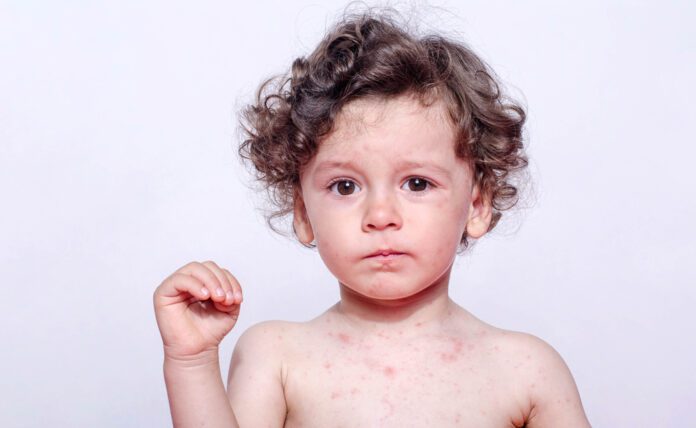Overview Of Roseola
Roseola is a viral infection that commonly affects infants and young children. It involves a pinkish-red skin rash and high fever.
Commonly Associated With
Exanthem subitum; Sixth disease
Causes Of Roseola
Roseola is common in children ages 3 months to 4 years, and most common in those ages 6 months to 1 year.
It is caused by a virus called human herpesvirus 6 (HHV-6), although similar syndromes are possible with other viruses.
Symptoms Of Roseola
The time between becoming infected and the beginning of symptoms (incubation period) is 5 to 15 days.
The first symptoms include:
- Eye redness
- Irritability
- Runny nose
- Sore throat
- High fever, that comes on quickly and may be as high as 105°F (40.5°C) and can last 3 to 7 days
About 2 to 4 days after becoming infected with roseola, the child’s fever lowers and a rash appears. This rash most often:
- Starts on the middle of the body and spreads to the arms, legs, neck, and face
- Is pink or rose-colored
- Has small sores that are slightly raised
- The rash lasts from a few hours to 2 to 3 days. It usually does not itch.
Exams & Tests
Your health care provider will perform a physical exam and ask questions about the child’s medical history. The child may have swollen lymph nodes in the neck or back of the scalp.
Treatment Of Roseola
There is no specific treatment for roseola. The disease most often gets better on its own without complications.
Acetaminophen (Tylenol) and cool sponge baths can help reduce the fever. Some children may have seizures when they get a high fever. If this occurs, call your provider or go to the closest emergency room.



